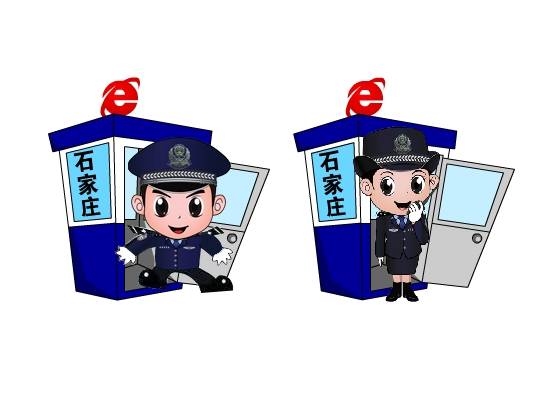实例介绍
【实例简介】
根据表中记录生成insert语句
【实例截图】
【核心代码】
CREATE PROCEDURE InsertGenerator
(
@tableName NVARCHAR(MAX),
@whereClause NVARCHAR(MAX)
)
AS
--Then it includes a cursor to fetch column specific information (column name and the data type thereof)
--from information_schema.columns pseudo entity and loop through for building the INSERT and VALUES clauses
--of an INSERT DML statement.
DECLARE @string NVARCHAR(MAX) --for storing the first half of INSERT statement
DECLARE @stringData NVARCHAR(MAX) --for storing the data (VALUES) related statement
DECLARE @dataType NVARCHAR(MAX) --data types returned for respective columns
DECLARE @schemaName NVARCHAR(MAX) --schema name returned from sys.schemas
DECLARE @schemaNameCount int--shema count
DECLARE @QueryString NVARCHAR(MAX) -- provide for the whole query,
set @QueryString=' '
--如果有多个schema,选择其中一个schema
SELECT @schemaNameCount=COUNT(*)
FROM sys.tables t
INNER JOIN sys.schemas s ON t.schema_id = s.schema_id
WHERE t.name = @tableName
WHILE(@schemaNameCount>0)
BEGIN
--如果有多个schema,依次指定
select @schemaName = name
from
(
SELECT ROW_NUMBER() over(order by s.schema_id) RowID,s.name
FROM sys.tables t
INNER JOIN sys.schemas s ON t.schema_id = s.schema_id
WHERE t.name = @tableName
) as v
where RowID=@schemaNameCount
--Declare a cursor to retrieve column specific information
--for the specified table
DECLARE cursCol CURSOR FAST_FORWARD
FOR
SELECT column_name ,
data_type
FROM information_schema.columns
WHERE table_name = @tableName
AND table_schema = @schemaName
OPEN cursCol
SET @string = 'INSERT INTO [' @schemaName '].[' @tableName ']('
SET @stringData = ''
DECLARE @colName NVARCHAR(500)
FETCH NEXT FROM cursCol INTO @colName, @dataType
PRINT @schemaName
PRINT @colName
IF @@fetch_status <> 0
BEGIN
PRINT 'Table ' @tableName ' not found, processing skipped.'
CLOSE curscol
DEALLOCATE curscol
RETURN
END
WHILE @@FETCH_STATUS = 0
BEGIN
IF @dataType IN ( 'varchar', 'char', 'nchar', 'nvarchar' )
BEGIN
SET @stringData = @stringData '''''''''
isnull(' @colName ','''') '''''','' '
END
ELSE
IF @dataType IN ( 'text', 'ntext' ) --if the datatype
--is text or something else
BEGIN
SET @stringData = @stringData '''''''''
isnull(cast(' @colName ' as nvarchar(max)),'''') '''''','' '
END
ELSE
IF @dataType = 'money' --because money doesn't get converted
--from varchar implicitly
BEGIN
SET @stringData = @stringData
'''convert(money,''''''
isnull(cast(' @colName
' as nvarchar(max)),''0.0000'') ''''''),'' '
END
ELSE
IF @dataType = 'datetime'
BEGIN
SET @stringData = @stringData
'''convert(datetime,''''''
isnull(cast(' @colName ' as nvarchar(max)),''0'') ''''''),'' '
END
ELSE
IF @dataType = 'image'
BEGIN
SET @stringData = @stringData '''''''''
isnull(cast(convert(varbinary,' @colName ')
as varchar(6)),''0'') '''''','' '
END
ELSE --presuming the data type is int,bit,numeric,decimal
BEGIN
SET @stringData = @stringData '''''''''
isnull(cast(' @colName ' as nvarchar(max)),''0'') '''''','' '
END
SET @string = @string '[' @colName ']' ','
FETCH NEXT FROM cursCol INTO @colName, @dataType
END
--After both of the clauses are built, the VALUES clause contains a trailing comma which needs to be replaced with a single quote. The prefixed clause will only face removal of the trailing comma.
DECLARE @Query NVARCHAR(MAX) -- provide for the whole query,
-- you may increase the size
PRINT @whereClause
IF ( @whereClause IS NOT NULL
AND @whereClause <> ''
)
BEGIN
SET @query = 'SELECT ''' SUBSTRING(@string, 0, LEN(@string))
') VALUES('' ' SUBSTRING(@stringData, 0,
LEN(@stringData) - 2)
''' '')''
FROM ' @schemaName '.' @tableName ' WHERE ' @whereClause
PRINT @query
-- EXEC sp_executesql @query --load and run the built query
--Eventually, close and de-allocate the cursor created for columns information.
END
ELSE
BEGIN
SET @query = 'SELECT ''' SUBSTRING(@string, 0, LEN(@string))
') VALUES('' ' SUBSTRING(@stringData, 0,
LEN(@stringData) - 2)
''' '')''
FROM ' @schemaName '.' @tableName
END
CLOSE cursCol
DEALLOCATE cursCol
SET @schemaNameCount=@schemaNameCount-1
IF(@schemaNameCount=0)
BEGIN
SET @QueryString=@QueryString @query
END
ELSE
BEGIN
SET @QueryString=@QueryString @query ' UNION ALL '
END
PRINT convert(varchar(max),@schemaNameCount) '---' @QueryString
END
EXEC sp_executesql @QueryString --load and run the built query
--Eventually, close and de-allocate the cursor created for columns information.
标签:
相关软件
小贴士
感谢您为本站写下的评论,您的评论对其它用户来说具有重要的参考价值,所以请认真填写。
- 类似“顶”、“沙发”之类没有营养的文字,对勤劳贡献的楼主来说是令人沮丧的反馈信息。
- 相信您也不想看到一排文字/表情墙,所以请不要反馈意义不大的重复字符,也请尽量不要纯表情的回复。
- 提问之前请再仔细看一遍楼主的说明,或许是您遗漏了。
- 请勿到处挖坑绊人、招贴广告。既占空间让人厌烦,又没人会搭理,于人于己都无利。
关于好例子网
本站旨在为广大IT学习爱好者提供一个非营利性互相学习交流分享平台。本站所有资源都可以被免费获取学习研究。本站资源来自网友分享,对搜索内容的合法性不具有预见性、识别性、控制性,仅供学习研究,请务必在下载后24小时内给予删除,不得用于其他任何用途,否则后果自负。基于互联网的特殊性,平台无法对用户传输的作品、信息、内容的权属或合法性、安全性、合规性、真实性、科学性、完整权、有效性等进行实质审查;无论平台是否已进行审查,用户均应自行承担因其传输的作品、信息、内容而可能或已经产生的侵权或权属纠纷等法律责任。本站所有资源不代表本站的观点或立场,基于网友分享,根据中国法律《信息网络传播权保护条例》第二十二与二十三条之规定,若资源存在侵权或相关问题请联系本站客服人员,点此联系我们。关于更多版权及免责申明参见 版权及免责申明



网友评论
我要评论